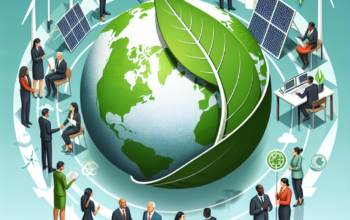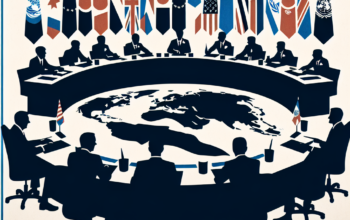Introduction
As of 2025, the landscape of women in politics has evolved significantly, with progress being made globally yet accompanied by enduring challenges. The increased representation of women in political offices has reshaped discussions surrounding governance, policy-making, and societal norms. Despite the advancements, women face unique hurdles that can impede their political aspirations, including systemic barriers, cultural biases, and gender discrimination. Understanding the current state of women in politics—highlighting both progress and challenges—illuminates the path toward achieving greater equality and recognition in governance.
Recent Progress in Women’s Political Representation
Over the past few decades, we’ve seen notable advancements in women’s political representation worldwide. In 2025, women hold an unprecedented number of leadership positions across various governments. For instance, the proportion of women in national parliaments has surged, with countries like Rwanda, New Zealand, and Sweden leading the way. According to recent data, Rwanda continues to be a trailblazer with 61% of its parliamentary seats occupied by women, showcasing a model of success that other nations aim to replicate. This increase is attributed to various initiatives, including gender quotas, advocacy groups, and international treaties highlighting women’s rights.
Furthermore, the role of women in politics is not limited to national levels; local governance is increasingly populated by female leaders. In many countries, women have been elected mayors or council members, demonstrating a shift in public perception and the viability of female candidates. Research indicates that when women hold leadership roles, communities benefit from more comprehensive policies that emphasize education, healthcare, and social welfare. This trend reflects a growing recognition of women’s essential contributions to achieving more balanced, inclusive governance at all levels.
Barriers Hindering Women in Politics
Despite the remarkable progress, barriers continue to impede women from attaining significant political power. One of the most pervasive challenges is the deeply entrenched patriarchal norms that prevail in many societies, where traditional gender roles discourage women’s participation in politics. Even when women are elected, they often face skepticism about their capabilities, which can lead to underfunding their campaigns or reducing their influence within political parties. This systemic bias can perpetuate a cycle of underrepresentation, as fewer role models in leadership positions makes it difficult for aspiring female politicians to envision their own success.
Additionally, the issue of safety and harassment cannot be overlooked in the discussion of women in politics. Female politicians often face increased scrutiny and targeted violence, both online and offline. In recent years, social media has become a double-edged sword, offering a platform for women to amplify their voices while simultaneously exposing them to threats and harassment. This hostile environment can deter women from pursuing political careers, leading to significant gaps in representation and engagement.
The Impact of Policy and Legislation on Women’s Political Empowerment
Policy and legislation play a pivotal role in shaping women’s political empowerment. The introduction of gender quotas has proven to be effective in increasing the number of women in political positions. Countries that have implemented such measures have seen a marked improvement in female representation. Research shows that when legislatures adopt gender quotas, the likelihood of women being elected increases significantly, thus enhancing the diversity of perspectives in governance. However, the effectiveness of these quotas often hinges on the political will and commitment of governing bodies to enforce them.
Moreover, advancements in policies supporting work-life balance have a profound impact on women’s political participation. Flexible working hours, parental leave, and childcare provision are critical factors that enhance women’s ability to engage in political careers. In 2025, several countries have recognized these needs and have begun implementing policies that address the daily challenges women face, making political careers more accessible. Supportive policies not only empower women but also contribute to a more diverse and representative political landscape overall.
The Role of Advocacy Groups and Grassroots Movements
Advocacy groups and grassroots movements have been instrumental in promoting women’s political rights and representation. Organizations such as EMILY’s List, She Should Run, and the Women’s March have successfully raised awareness about the importance of women in political leadership and mobilized support for female candidates. These organizations provide resources, training, and networks that empower women to run for office, effectively creating a pipeline for future leaders. In 2025, the influence of these groups is more pronounced than ever, as they continue to advocate for policies that promote gender equality in politics.
Grassroots movements also play a critical role in challenging local and national policies that restrict women’s political engagement. For example, campaigns focusing on voter registration, education, and awareness have increased participation rates among women in elections. As more women become active in their communities, the demand for female representation in political spheres grows, leading to a cultural shift that values diversity and inclusivity. The collaboration between advocacy groups and the women they support has been pivotal in creating a new narrative around women’s political empowerment.
Looking Ahead: The Future of Women in Politics
As we move forward, the future of women in politics seems promising yet requires continued effort to overcome the inherent challenges. Engaging men as allies in the pursuit of gender equality is crucial for fostering an inclusive political environment. Encouraging men to confront their biases and advocate for women’s rights can help dismantle systemic barriers that have persisted for generations. Collaborative initiatives that involve both women and men are essential for creating a balanced and equitable political landscape.
Moreover, technology will continue to play a transformative role in shaping women’s political participation. Social media and digital platforms present significant opportunities for female candidates to connect with voters, share their messages, and mobilize support. In 2025, leveraging technology is not just about campaigning; it’s about building communities of support and engagement for women voters and leaders. Online platforms can be a game changer in redefining how politics is conducted, enabling more voices to be heard and valued in the political discourse.
Furthermore, education remains a cornerstone of empowering women in politics. Initiatives aimed at educating young women about their political rights and encouraging civic engagement from an early age will sow the seeds for future political leaders. Schools, universities, and community programs focused on leadership training, public speaking, and advocacy will ensure that the next generation of women is equipped to navigate the political landscape with confidence and skill.
Conclusion
In conclusion, the journey of women in politics reflects both significant progress and ongoing challenges. While achieving a higher representation of women in political offices illustrates a vital shift toward inclusivity, barriers rooted in societal norms and systemic biases continue to inhibit their financial support and safety. Advocacy groups and grassroots movements serve as powerful catalysts for change, promoting policies and creating environments where women can thrive politically. Looking ahead, collaboration, technology, and education will play critical roles in shaping the landscape for women in politics, paving the way for a future where gender equality in governance is not just an aspiration but a reality.
FAQs
What is the current state of women’s political representation in 2025?
In 2025, women have achieved significant representation in political offices globally, with many countries implementing gender quotas and supportive policies to enhance female participation in governance.
What challenges do women face in politics today?
Women often face challenges such as entrenched patriarchal norms, safety and harassment issues, and lack of financial support for their campaigns, which can deter them from pursuing political careers.
How do advocacy groups support women in politics?
Advocacy groups provide resources, training, and networks for women aspiring to run for office, while also raising awareness about the importance of gender equality in political representation.
What role does technology play in promoting women’s political empowerment?
Technology, particularly social media, enables female candidates to connect with voters, share their messages, and mobilize support more effectively than ever before, shaping the future of political engagement.
Why is education important for women in politics?
Education equips young women with the knowledge and skills needed to engage politically, fostering the next generation of female leaders who can navigate and influence the political landscape.












